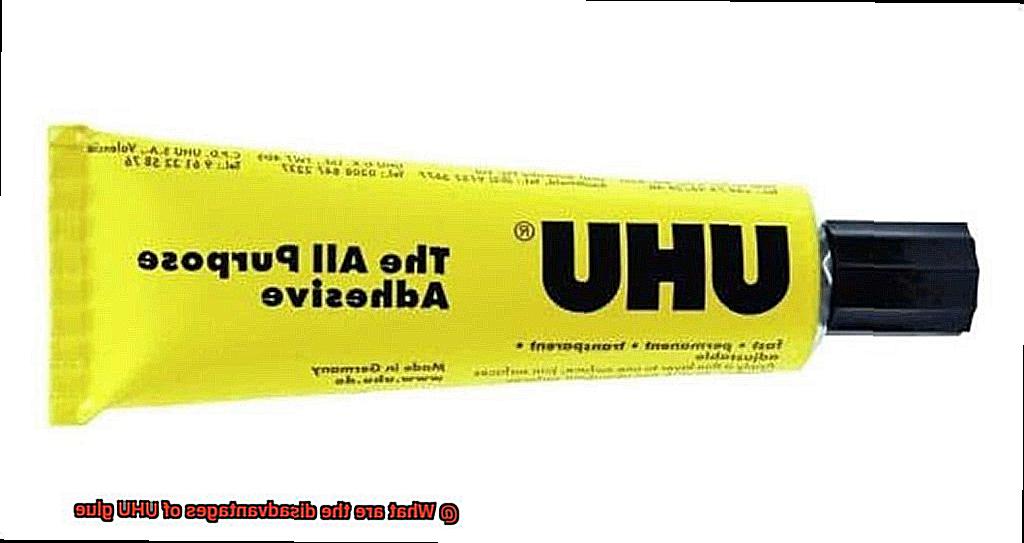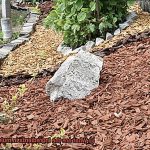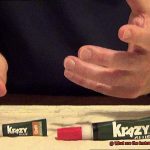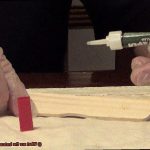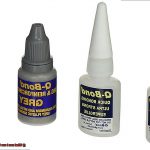Picture this: you’re knee-deep in a crafting project, armed with your trusty UHU glue, ready to take on the world. But hold up. Before you dive headfirst into gluing everything in sight, let’s take a moment to uncover the not-so-pretty side of this popular adhesive.
UHU glue has earned its stripes in the crafting community for its undeniable strength and versatility. It’s like that reliable friend who always has your back when you need it most. However, even the best of friends have their flaws, and UHU glue is no exception.
In this blog post, we’re going to lift the curtain and expose the disadvantages of using UHU glue. We’ll explore its limitations when it comes to bonding certain materials and shed light on its tendency to dry out faster than a desert cactus. Our goal? To equip you with all the information you need before reaching for that tube of UHU glue.
So, grab a seat and get ready to navigate through the treacherous waters of adhesive mishaps. Because let’s face it – knowledge is power, especially when it comes to avoiding sticky situations in your crafting endeavors.
Difficulty in Removal
Contents
In this article, we will explore the challenges of removing UHU glue and the potential disadvantages it may present.
The Challenge of Removal:
UHU glue’s greatest strength – its strong and long-lasting bond – can also be its downfall. Once dried, UHU glue forms an unyielding grip that makes removal a daunting task. Delicate or sensitive surfaces are particularly susceptible to damage during the removal process.
Methods of Removal:
When attempting to remove dried UHU glue, there are several methods to consider:
- Solvents or adhesive removers: These products break down the glue, facilitating its removal. However, caution must be exercised as some solvents can harm certain materials. Always test them on a small, inconspicuous area first.
- Mechanical means: Scraping or sanding can also be used to remove UHU glue. However, these methods carry the risk of damaging the underlying surface. Gentle tools and techniques should be employed to minimize any potential harm.
Excess Glue and Unintended Areas:
Accidental application of excess UHU glue or its spread onto unintended areas can complicate removal even further. Excess glue adhering to other surfaces intensifies the challenge of removal without causing damage.
Specialized Solutions:
UHU offers specialized products like their “UHU Twist and Glue ReNATURE” line, formulated with lesser bond strength for easier removal even after drying. However, these alternatives may not be as widely available or suitable for all projects.
Disadvantages of UHU Glue:
- Residue and stains on certain materials
- Strong odor
- Incompatibility with delicate materials
- Clumping and thickening
- Higher cost


Potential for Stains and Residue
When it comes to adhesive products, UHU glue is a reliable choice for all your crafting and repair needs. However, like any adhesive, it has the potential to leave behind stains and residue if not used with care. But fear not. In this blog post, we’ll explore the ins and outs of using UHU glue while minimizing the occurrence of those unsightly marks. So grab your crafting supplies and let’s dive in.
Apply with Precision:
To avoid stains and residue, precision is key when applying UHU glue. Use a small brush or applicator to apply just the right amount of glue. Remember, a little goes a long way. By controlling the amount of glue used, you can prevent excess from seeping out and causing stains.
Test, Test, Test:
Before using UHU glue on a larger surface, it’s always a good idea to do a test run. Apply a small amount of glue on an inconspicuous area and observe how it reacts with the material. This way, you can avoid any surprises and make sure the glue is compatible. Testing also allows you to adjust your application technique if necessary.
Clean Up Spills Immediately:
Accidents happen, but don’t panic if you spill some glue. The key is to act quickly. Grab a damp cloth or sponge and gently blot the spill. Avoid rubbing as it may spread the glue further. Prompt action can prevent stains from setting.
Delicate Material? Proceed with Caution:
UHU glue is powerful, but some materials require extra care. If you’re working with delicate fabrics or valuable items, it’s best to consult the manufacturer’s instructions or seek professional advice. Better safe than sorry. Taking precautions will help avoid irreversible damage or stubborn stains.
Time for Removal? Be Gentle:
If you find yourself needing to remove UHU glue, take a gentle approach. Use rubbing alcohol or a mild detergent solution on a clean cloth. Gently dab the affected area until the glue starts to dissolve. Remember, patience is key. Rushing the removal process can lead to further damage or residue being left behind.
With a little knowledge and some careful steps, you can use UHU glue with confidence, knowing that stains and residue won’t be a lingering issue. So go ahead and let your creativity soar, knowing that UHU glue has got your back. Happy crafting.
Strong Odor
Today, we’re diving into a topic that often goes unnoticed but can truly make or break your crafting experience – the strong odor of UHU glue. While this adhesive is renowned for its bonding prowess, its pungent aroma can pose a challenge for some users. So, let’s explore the potential issues associated with this nose-wrinkling scent and why it’s important to address.
The Chemistry Behind the Stench:
UHU glue’s potent odor stems from its chemical composition. This adhesive contains solvents and adhesives that emit volatile organic compounds (VOCs), responsible for that distinct smell. These VOCs are essential for the glue’s effectiveness but can also trigger discomfort in sensitive individuals.
Sensitive Souls Beware:
For those who are sensitive or allergic to certain chemicals, the strong odor of UHU glue can be a real deal-breaker. Headaches, dizziness, and even nausea may ensue when exposed to this fragrance. It’s crucial to be aware of your body’s reactions and take necessary precautions if you fall into this category.

Sharing Spaces – A Smelly Dilemma:
Imagine this scenario: you’re in a bustling classroom or an open-plan office, and suddenly, the overpowering aroma of UHU glue wafts through the air. Not only is this disruptive to your concentration, but it can also affect others around you. Poor ventilation exacerbates the situation, making the odor even more pronounced and bothersome.
Ventilation is Key:
To combat the lingering fragrance, adequate ventilation is paramount. Consider using UHU glue in well-ventilated areas to disperse the smell more efficiently. Open windows or utilize fans to improve air circulation if circumstances allow. Alternatively, donning protective masks can minimize exposure to the strong odor and keep your crafting experience enjoyable.
Indoor Air Quality Concerns:
Beyond personal discomfort, the strong smell of UHU glue can impact the overall indoor air quality of a space. Frequent or extensive use of the glue can contribute to an accumulation of VOCs, affecting the well-being of all occupants. Remember, a breath of fresh air is always better than inhaling noxious fumes.
While the strong odor of UHU glue may be a thorny issue for some users, it’s important to recognize that not everyone finds it bothersome or experiences adverse reactions.
Nonetheless, taking steps to minimize exposure and prioritize ventilation can make your gluing endeavors more pleasant for all involved. So, next time you reach for that trusty UHU glue, be mindful of its aroma and craft on.
Incompatible with Delicate Materials
It’s a powerhouse adhesive that’s widely used for its super-strength bond. But here’s the catch – when it comes to delicate materials, UHU glue might not be your best bet. Let’s delve into the reasons why UHU glue and delicate materials simply don’t mix.
Imagine this scenario: you’re working on a beautiful paper craft or trying to mend a delicate fabric piece, and you instinctively reach for your trusty UHU glue. Hold your horses. Before you go all in, there’s something you need to know. The strong adhesive properties of UHU glue can wreak havoc on delicate materials like paper, fabric, and certain types of plastics.
So why is this the case? The composition of UHU glue includes solvents and chemicals that can have adverse reactions with these fragile surfaces. When applied to paper, it can leave behind unsightly wrinkles or discoloration. Fabric? Brace yourself for stains that can ruin your creation or even weaken the fabric’s integrity. And let’s not forget certain plastics that may end up discolored or even melted.
But the challenges don’t end there. Removing UHU glue from delicate materials is like playing a nerve-wracking game of Jenga – one wrong move, and everything crumbles. The bond created by this potent adhesive is incredibly strong, making it nearly impossible to separate without tearing or damaging the delicate material.
Now, fret not. There are alternative glues out there explicitly designed for delicate surfaces. These gentler adhesives possess a compatibility with delicate materials that UHU glue lacks. They won’t distort your paper, stain your fabric, or cause your plastic to melt away.
However, don’t bid farewell to UHU glue just yet. Not all delicate materials will react negatively to it. Some types of paper or fabric might be more resistant to its adhesive properties.
Nevertheless, it’s always wise to conduct a small test on an inconspicuous area before committing to using UHU glue on delicate materials.
Clumping and Thickening
UHU glue is renowned for its strong adhesive properties, but clumping and thickening can be exasperating obstacles. Fear not, for we have the solutions to ensure a smooth application every time. In this comprehensive guide, we will delve into the causes of clumping and thickening in UHU glue and provide you with invaluable tips to conquer these challenges.
Causes and Solutions:
Exposure to Air:
- Cause: The culprit behind clumping and thickening is the entry of air into the glue container, which leads to moisture evaporation and a thicker consistency.
- Solution: To maintain UHU glue’s ideal consistency, store it in a cool, dry place with the cap tightly sealed after each use. This simple step prevents air exposure and preserves the glue’s smooth texture.
Temperature Changes:
- Cause: Fluctuating temperatures wreak havoc on UHU glue’s consistency, causing it to thicken.
- Solution: Shield your glue from extreme temperatures by opting for a temperature-stable storage location. This ensures that your glue retains its original consistency regardless of external conditions.

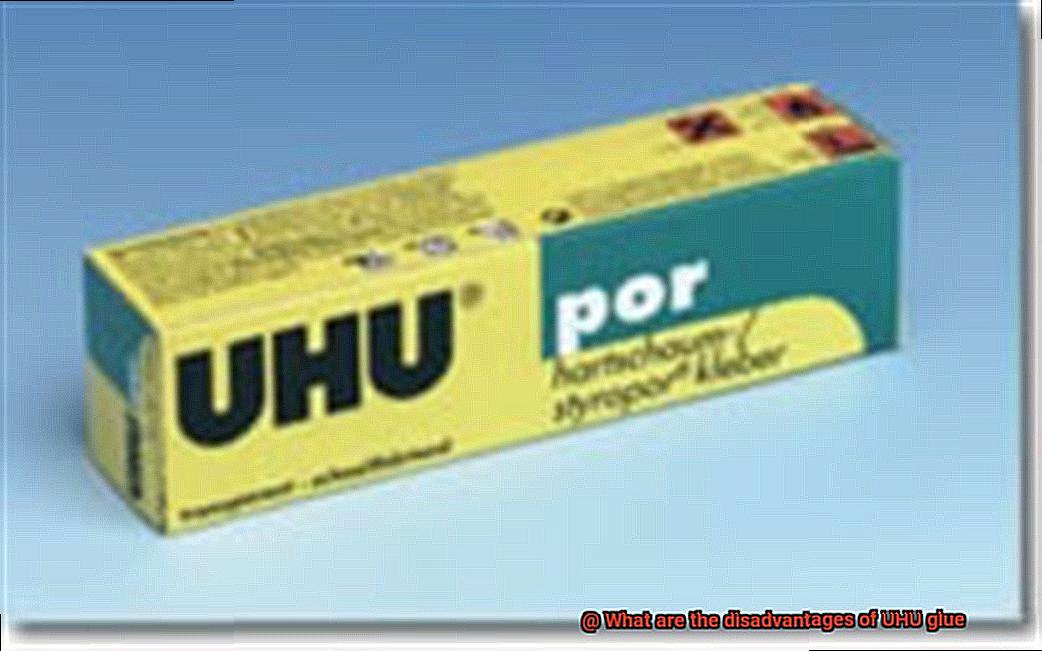
Improper Storage:
- Cause: Storing UHU glue in a humid environment accelerates evaporation and clumping.
- Solution: Safeguard your glue by keeping it in a cool and dry place. By minimizing moisture exposure, you preserve the quality of the glue over time.
Tips for Overcoming Clumping and Thickening:
Shake or Knead:
Add Water:
Consider Replacement:
Expensive Compared to Alternatives
When it comes to glue, quality and reliability are paramount considerations. UHU glue has emerged as a top choice due to its exceptional adhesive properties. However, its higher price compared to alternatives has raised questions.
This article explores the reasons behind UHU glue’s elevated cost, including its premium formulation, packaging size, brand recognition, and overall value.
Premium Ingredients and Formulation:
UHU glue’s higher price can be attributed to its superior formulation. The glue stands out for its high-quality materials and specialized formulas that ensure unparalleled adhesive strength and durability. These premium ingredients drive up production costs, resulting in a higher retail price. While cheaper alternatives may exist with similar functionalities, it is essential to acknowledge that UHU glue’s performance often justifies its elevated cost.
Packaging Size:
Another factor impacting UHU glue’s price is its smaller packaging size. Packaged in compact tubes or bottles, it may seem less cost-effective for those requiring larger quantities or frequent adhesive use. In contrast, other glues offer bulk options or larger quantities at a lower price per unit. Therefore, individuals needing significant amounts of adhesive should consider UHU glue’s higher cost as a limiting factor.
Brand Recognition and Reputation:
The adhesive industry recognizes UHU as a trusted and reliable brand. Over time, customers have associated UHU with quality and effectiveness. This brand recognition significantly contributes to UHU glue’s higher price tag. Consumers are often willing to pay a premium for the assurance of quality that comes with the trusted brand name.
Value and Performance:
Despite being pricier than some alternatives, UHU glue’s performance and durability often justify the investment. Its strong bonding capabilities and long-lasting adhesion make it a worthwhile choice, particularly for projects requiring a reliable and secure bond. Opting for UHU glue saves users from the frustrations of clumping and thickening, ensuring a consistently smooth application.
Tips for Proper Storage of UHU Glue
Its strong adhesive properties make it ideal for a wide range of projects. However, to ensure its effectiveness and longevity, proper storage is crucial. In this blog post, we will share some valuable tips on how to store UHU glue correctly.
Keep it Cool and Dry:
Extreme temperatures can affect the consistency and adhesiveness of UHU glue. Store it in a cool and dry place, away from direct sunlight or heat sources like radiators. Just like us on a hot summer day, UHU glue loves to stay cool and dry.
Tighten the Cap:
After each use, make sure to tightly seal the cap or lid of the UHU glue bottle. This prevents air from entering and drying out the glue. Give the cap a quick cleaning to remove any dried residue before sealing it up – just like putting on a snug winter hat. This will keep your UHU glue fresh and ready for action.
Stand Tall:
If you have multiple bottles or a large quantity of UHU glue, store them upright instead of lying flat. This helps prevent the glue from pooling at one end of the bottle, ensuring even distribution when you need it. Imagine a row of soldiers standing tall and ready for action. By storing your UHU glue upright, you’ll have consistent adhesive power every time.
Out of Reach:
Keep UHU glue away from children and pets. Accidental spills or misuse can be messy and potentially harmful if ingested or applied to the skin. Let’s keep our curious little ones and furry friends safe. By storing your UHU glue in a secure location out of reach, you can ensure that everyone stays safe while you work on your projects.
Check the Expiry Date:
UHU glue has a shelf life, typically one to two years. Always check the expiry date on the bottle and discard any expired glue. Using fresh glue guarantees reliable results every time – just like using fresh ingredients in a delicious recipe. By checking the expiry date, you can ensure that your UHU glue is in its prime and ready to tackle any project.
bC48YBMti8A” >
Conclusion
In conclusion, UHU glue, although popular for crafting and adhesive needs, does come with its fair share of drawbacks. One major disadvantage is the arduous task of removing dried UHU glue, especially from delicate surfaces. The formidable bond it creates can make removal a daunting and often damaging process.
Another downside is the potential for stains and residue when using UHU glue. Careless application or neglecting to clean up spills immediately can result in unsightly marks on certain materials.
The pungent odor emitted by UHU glue is also worth noting as a notable disadvantage. The chemical composition releases volatile organic compounds (VOCs), which can cause discomfort for sensitive individuals and negatively impact indoor air quality.
Delicate materials such as paper, fabric, and certain plastics are incompatible with UHU glue. Its strong adhesive properties have the potential to damage or discolor these fragile surfaces.
Furthermore, over time, UHU glue tends to clump and thicken, rendering it less effective. This can be incredibly frustrating for users who expect a smooth application.
Lastly, compared to some alternatives, UHU glue may be pricier due to its premium formulation, smaller packaging size, brand recognition, and overall value.
Despite these disadvantages, implementing proper storage techniques can help alleviate some of these issues. Storing UHU glue in a cool and dry place with the cap tightly sealed after each use will maintain its effectiveness and longevity.

